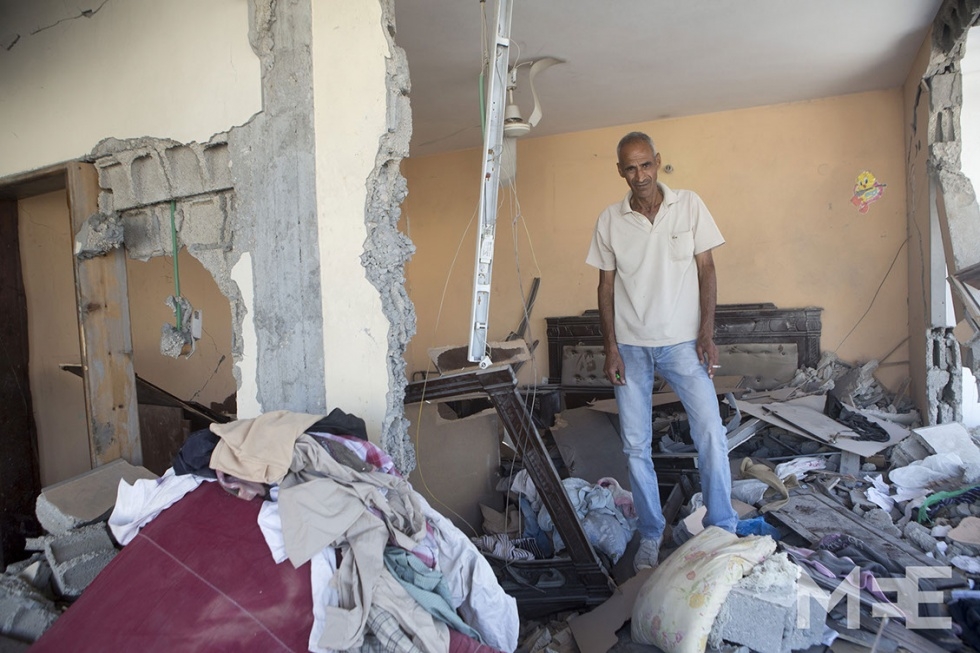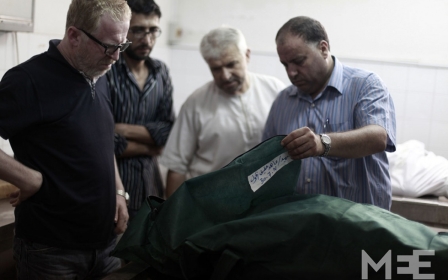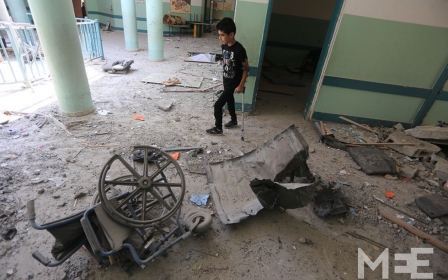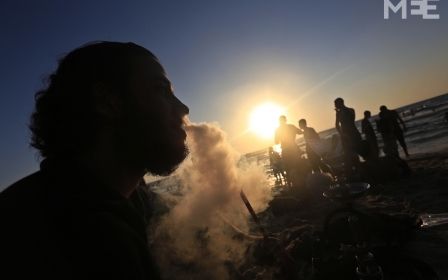In pictures: A life amongst rubble in Gaza's Shejaiya

Members of Hamde Atef’s family gather around a fire at night on the ground floor of the remaining half of their 4-storey razed home in one of the most decimated areas of Shejaiya, a neighbourhood east of Gaza city, which came under sustained and brutal attack from the Israeli forces during the latest offensive.
In total, according to OCHA, 18,000 housing units have been either destroyed or severely damaged, leaving approximately 108,000 Palestinians homeless. Days after the truce, some families are still scouring the rubble for the remnants of their lives ; or searching in vain for the valuables they had to leave behind. The level of devastation is overwhelming, and the full rehabilitation of the area will take years if not decades. The Palestinians are simply not well enough equipped to efficiently counter this overwhelming level of destruction.
For the Atef family, the fire is the only source of light, apart from mobile phones and some candles. Their home along with all the other buildings in this area has neither water nor electricity supply. Despite these dire living conditions the family refuse to leave what remains of their home. They have nowhere to go and no money to rent anywhere else. The family consists of 50 family members in total, including 15 children. Hamde, father of eight does not wish to live elsewhere. He has fond memories of building the house himself around thirty years ago: “we are used to living here in Shejaiya. We grew up here. We don’t want to leave”
Hamde recalls the horrific night when they were forced to flee. He was in the bathroom when his mobile phone rang. His son answered the call from the IOF warning that they would bomb the adjacent building and instructing them to evacuate immediately and not to return before the end of the war. Initial confusion when he heard people shouting gave way to panic and Hamde only had time to grab his children and run out of the house, wearing only his shorts. Just 10 minutes later their neighbour’s house was reduced to rubble by an airstrike, killing an 80 year old woman, Hijazia Helou who had refused to leave her home.
Hamde and his family found shelter with relatives down the road and came back with the co-ordination of the International Red Cross Committee, only to find their home half destroyed. They returned to their relatives but could not stay there much longer. The attack on Shejaiya intensified during the days that followed. During a night of particularly intense bombing and shelling which preceded the Ground Invasion, they once more had to flee and took shelter in a school. Due to overcrowding at the school the family were forced to split and seek refuge with various relatives and friends.
During one ceasefire the men ventured back to check on their house but once more they were driven away as Israel broke the ceasefire and bombing resumed. Finally they returned on the first day of the month long truce and have settled back into the half of the house still standing in defiance of the Israeli onslaught.
Despite all they have endured and their fears that the bombing may resume, they are adamant that they will stay in their shell of a home “this is our home” . Hamde had invested not only his savings but his heart into this building, his home. As for many, his home is more than just a place to sleep, this has been a life’s work.
When asked if he thinks he will receive prompt assistance to rebuild, Hamde expresses doubts “ we expect to receive aid, yes. But the problem is that each Party will look after its own supporters. We are not registered so we are worried that nobody will come to see us”
This is not the first evacuation for this family. In 2008, during Operation Cast Lead, everyone left except Hamde who remained with his new bride. The house sustained minor damage but nothing compared to the effects of this latest Israeli offensive.
It is very likely that Gaza will once more come under attack as there does not appear to be a long term political solution in sight.
As the fire dies down to embers, the house is plunged into total darkness and Hamde’s family prepare for another night spent wondering when and indeed if they will ever be able to restore their home and lives.
Middle East Eye propose une couverture et une analyse indépendantes et incomparables du Moyen-Orient, de l’Afrique du Nord et d’autres régions du monde. Pour en savoir plus sur la reprise de ce contenu et les frais qui s’appliquent, veuillez remplir ce formulaire [en anglais]. Pour en savoir plus sur MEE, cliquez ici [en anglais].





